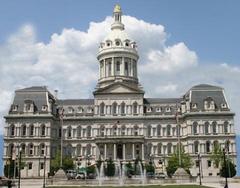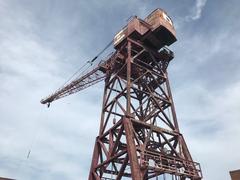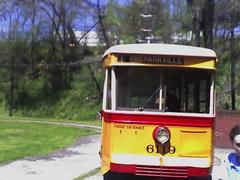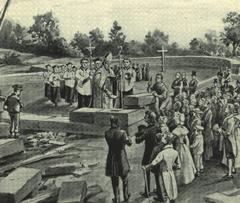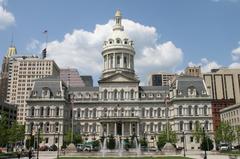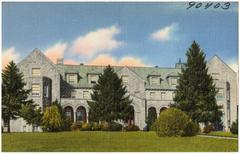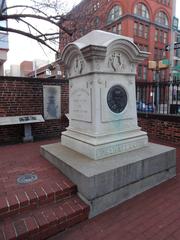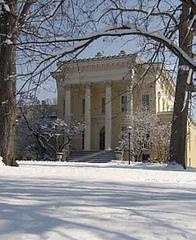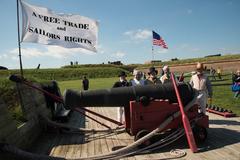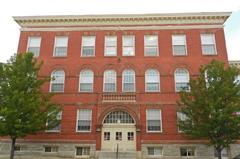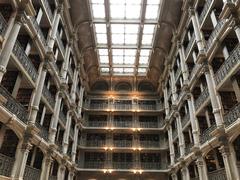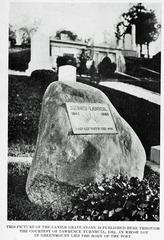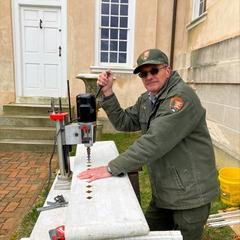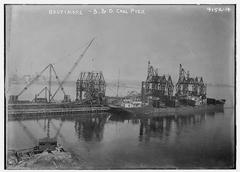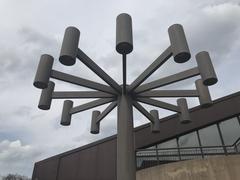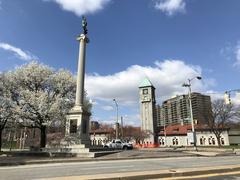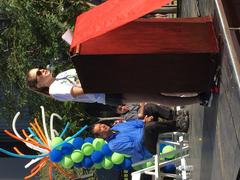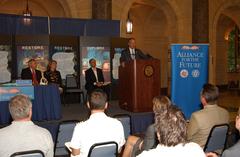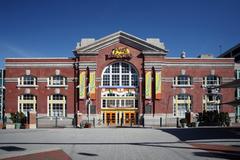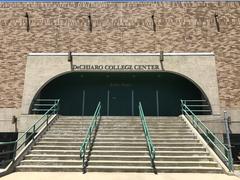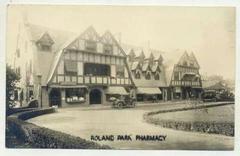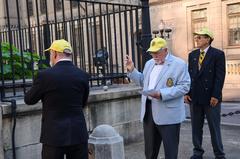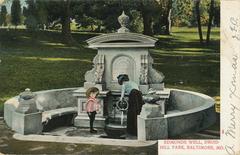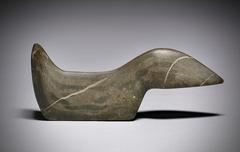
Gwynns Falls Leakin Park: Visiting Hours, Tickets, and Baltimore Historical Sites Guide
Date: 03/07/2025
Introduction
Gwynns Falls/Leakin Park is Baltimore’s largest urban woodland and the second-largest city park of its kind in the United States, spanning more than 1,200 acres of lush forests, scenic trails, and historic landmarks. This unique urban oasis blends natural beauty, biodiversity, cultural heritage, and vital ecological functions, making it an essential destination for nature lovers, history enthusiasts, families, and outdoor adventurers. Conveniently located in west Baltimore, the park is open daily from dawn to dusk with free admission, welcoming visitors to explore its extensive trail network, historic estates like the Orianda Mansion, and enriching educational programs.
This comprehensive guide provides detailed information on visiting hours, admission, accessibility, recreational opportunities, historical and environmental importance, and nearby attractions. Whether you’re interested in hiking, participating in guided nature walks, attending community festivals, or learning about Baltimore’s history, Gwynns Falls/Leakin Park offers a wide variety of experiences for all ages. The park also plays a crucial role in urban sustainability by protecting watersheds, supporting wildlife habitat, and serving as a model for community-based conservation. For the latest updates, program details, and visitor resources, refer to the official websites of Baltimore City Recreation and Parks and Friends of Gwynns Falls/Leakin Park.
Table of Contents
- Welcome to Gwynns Falls/Leakin Park
- Visiting Hours and Admission
- Getting There and Parking
- Accessibility
- Guided Tours and Educational Programs
- Trails and Recreation
- Events and Cultural Highlights
- Historical and Architectural Significance
- Environmental Importance
- Nearby Attractions
- Frequently Asked Questions (FAQ)
- Plan Your Visit and Stay Connected
Welcome to Gwynns Falls/Leakin Park
Gwynns Falls/Leakin Park is Baltimore’s largest woodland park and a living example of how urban green spaces can provide both natural refuge and community gathering places. With its sprawling acres, historical estates, and diverse habitats, the park invites exploration and discovery for visitors of all backgrounds and interests.
Visiting Hours and Admission
- Hours: Open daily from dawn to dusk, year-round.
- Admission: Free general entry. Some special events or programs may require advance registration or a fee; check with the Baltimore City Recreation and Parks for up-to-date details.
Getting There and Parking
- By Car: Multiple parking lots are available near main entrances, including the Crimea area, Winans Meadow, and Carrie Murray Nature Center.
- Public Transit: Several Baltimore MTA bus routes and the Metro Subway serve stops near the park’s entrances. Plan your trip using the Maryland Transit Administration website.
- Bike Access: The Gwynns Falls Trail is bike-friendly and connects to Baltimore’s citywide trail network. Bike racks are available at major trailheads.
Accessibility
Gwynns Falls/Leakin Park strives to accommodate all visitors:
- Many paved trails and facilities, including the Carrie Murray Nature Center, are wheelchair accessible.
- Some picnic areas and restrooms are accessible; terrain may vary in remote sections.
- For specific accessibility needs or to request accommodations, contact the park administration prior to your visit.
Guided Tours and Educational Programs
- Carrie Murray Nature Center: Offers year-round programs including guided nature walks, birdwatching tours, and interactive workshops for all ages.
- Chesapeake Bay Outward Bound School: Provides adventure programs focusing on youth leadership and environmental stewardship.
- Community Events: Seasonal activities such as the Baltimore Herb Festival, Juneteenth celebrations, and Nature Art in the Park are highlights. Check the Friends of Gwynns Falls/Leakin Park events calendar for current listings.
Trails and Recreation
- Hiking & Biking: Over 15 miles of interconnected trails, including the popular Gwynns Falls Trail, offer options for all skill levels. Trail surfaces vary from paved paths to natural woodland tracks.
- Family Activities: Miniature train rides (operated by Chesapeake and Allegheny Steam Preservation Society), picnic areas, and open lawns encourage family recreation. Sports facilities include tennis and basketball courts.
- Nature Observation: The park’s extensive woodlands and streams provide habitats for birds, mammals, amphibians, and aquatic species. Birdwatchers can spot woodpeckers, hawks, and migratory songbirds.
Events and Cultural Highlights
- Annual Festivals: Baltimore Herb Festival, Juneteenth/Solstice celebrations, and Nature Art in the Park.
- Workshops and Clean-ups: Community education and stewardship events promote conservation and park engagement.
- Historical Tours: Explore self-guided tours of historic sites, available through informative signage and online resources.
Historical and Architectural Significance
Gwynns Falls/Leakin Park preserves a rich legacy:
- Origins: Established in the early 20th century as a “stream valley park” by the Olmsted Brothers to protect city watersheds.
- Historic Estates: The Crimea Estate and Orianda Mansion exemplify 19th-century architecture and rural picturesque landscape design. The Celeste Winans Chapel and historic bridges offer a glimpse into Baltimore’s past.
- Industrial Remnants: Old mills and carriage roads provide insight into the city’s industrial heritage.
Environmental Importance
- Watershed Protection: The park’s streams and wetlands filter stormwater, reduce flooding, and improve water quality for the Gwynns Falls watershed and Chesapeake Bay.
- Ecological Diversity: 84% forested, the park supports rare plant and animal species. Community science initiatives like “Stream Days” engage the public in monitoring stream health.
- Urban Sustainability: Acts as a green lung for Baltimore, providing carbon sequestration, air purification, and temperature regulation.
Nearby Attractions
Enhance your visit by exploring:
- Inner Harbor: Baltimore’s iconic waterfront destination.
- Maryland Zoo: Located nearby for family-friendly adventures.
- Historic Neighborhoods: Reservoir Hill, West Baltimore, and other culturally rich areas.
- Other Parks: Patterson Park and Druid Hill Park offer additional outdoor recreation.
For more, visit the Baltimore Tourism Official Site.
Frequently Asked Questions (FAQ)
Q: What are the park’s hours?
A: Open daily from dawn to dusk.
Q: Is there an entrance fee?
A: No, general admission is free. Some events or programs may require a fee.
Q: Are pets allowed?
A: Yes, dogs are permitted but must be leashed. Please use pet waste stations located at major entrances.
Q: Are there accessible trails and facilities?
A: Many areas are wheelchair accessible, though some terrain may be uneven.
Q: Are guided tours available?
A: Yes, through the Carrie Murray Nature Center and various community programs.
Q: What is the best time to visit?
A: Spring and autumn offer pleasant weather and vibrant foliage, but the park is open year-round.
Q: Are there safety tips for visitors?
A: Stay on marked trails, visit in groups when possible, and report any concerns to park rangers.
Plan Your Visit and Stay Connected
Make the most of your visit by checking the latest updates and event schedules on the Baltimore City Recreation and Parks website and the Friends of Gwynns Falls/Leakin Park site. Download the Audiala app for audio tours and interactive park maps. Follow Gwynns Falls/Leakin Park on social media for news, volunteer opportunities, and tips.
Visual Recommendations
- Include high-resolution images of Gwynns Falls Trail, Crimea Estate, Orianda Mansion, historic bridges, and wildlife.
- Use descriptive alt text such as “Gwynns Falls/Leakin Park hiking trail map” and “Baltimore historical sites” to enhance accessibility and SEO.
- Consider virtual tour videos and interactive maps for a richer digital experience.
Summary
Gwynns Falls/Leakin Park is more than just Baltimore’s largest urban woodland—it is a vibrant community asset where history, nature, and recreation converge. Open daily and free to visit, the park invites everyone to explore its scenic trails, participate in educational programs, and experience its rich heritage. Its environmental stewardship, community engagement, and ongoing improvements highlight the park’s role as a model for urban sustainability. Plan your visit today, stay connected with official resources, and discover the best of Baltimore’s outdoors.
Useful Links
- Baltimore City Parks - Gwynns Falls/Leakin Park
- Friends of Gwynns Falls/Leakin Park
- Baltimore Tourism Official Site
- Baltimore Bike Share
References
- Discover Gwynns Falls/Leakin Park: Baltimore’s Largest Urban Woodland Park and Historical Gem, 2025, Baltimore City Department of Recreation and Parks (Baltimore City Recreation and Parks)
- Gwynns Falls/Leakin Park: Visiting Hours, Tickets, and Baltimore’s Urban Historical Site Guide, 2025, Natural History Society of Maryland (Friends of Gwynns Falls/Leakin Park)
- Recreational Opportunities and Attractions at Gwynns Falls/Leakin Park: Visiting Hours, Tickets, and More, 2025, Baltimore City Parks (Baltimore City Recreation and Parks)
- Exploring Gwynns Falls/Leakin Park: Visitor’s Guide to Baltimore’s Largest Urban Green Space, 2025, Baltimore City Recreation and Parks (Baltimore City Recreation and Parks)


